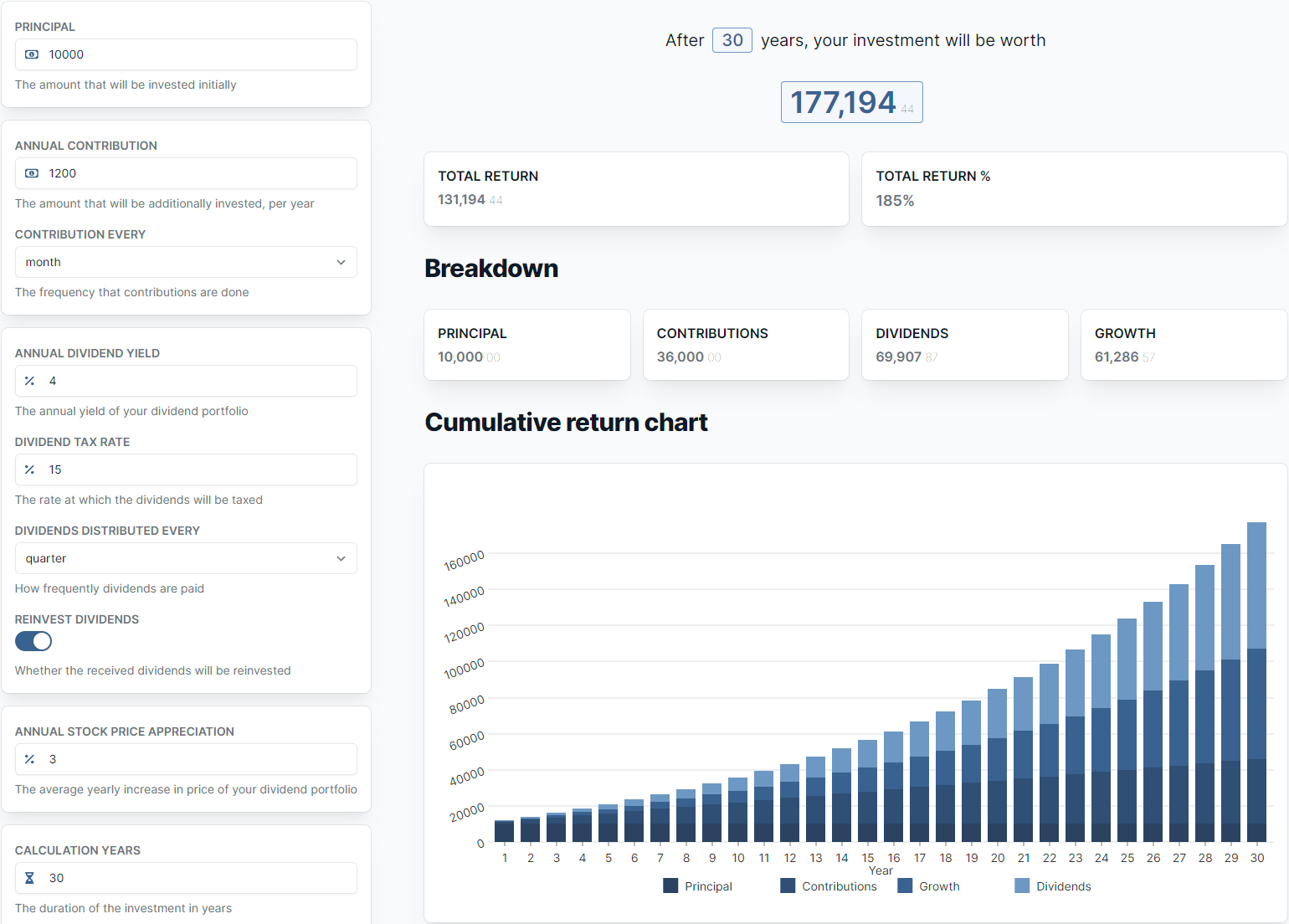Dividend Calculator
Easy to use dividend calculator. Estimate the dividend and growth yield of your investment with a few clicks.
Accurate estimations
Estimate your dividend income
Estimate how much income you might receive from your investments over a given period.
- Customizable Parameters.
- Adjust parameters to reflect changes in your investment portfolios or market conditions.
- Calculation and Results.
- Upon entering the necessary data, the app performs calculations to determine the projected dividend payments.
- Graphical Representation.
- Visual representations, such as graphs or charts, that help you better understand how your dividend income may change over time.
